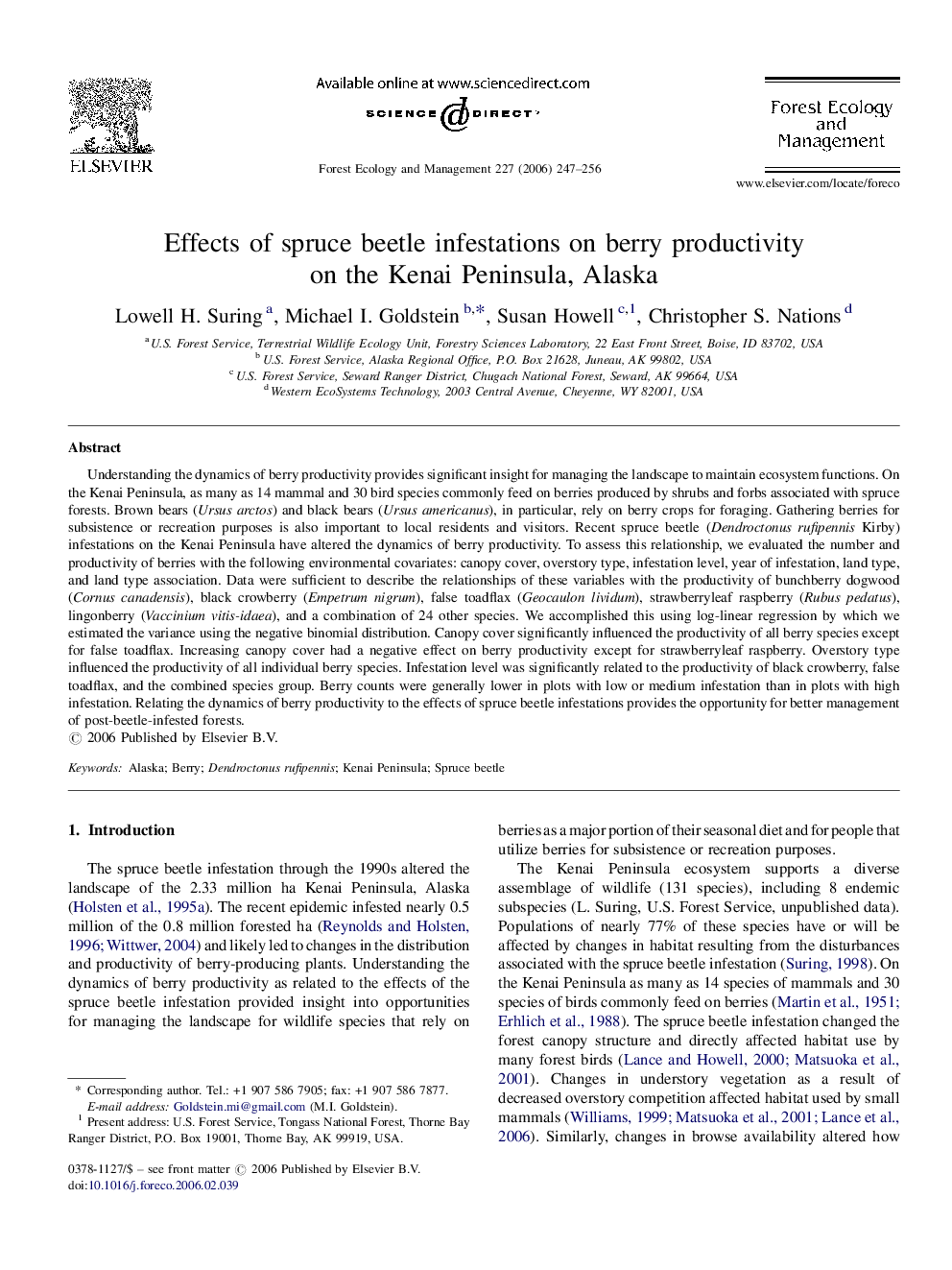| Article ID | Journal | Published Year | Pages | File Type |
|---|---|---|---|---|
| 90923 | Forest Ecology and Management | 2006 | 10 Pages |
Understanding the dynamics of berry productivity provides significant insight for managing the landscape to maintain ecosystem functions. On the Kenai Peninsula, as many as 14 mammal and 30 bird species commonly feed on berries produced by shrubs and forbs associated with spruce forests. Brown bears (Ursus arctos) and black bears (Ursus americanus), in particular, rely on berry crops for foraging. Gathering berries for subsistence or recreation purposes is also important to local residents and visitors. Recent spruce beetle (Dendroctonus rufipennis Kirby) infestations on the Kenai Peninsula have altered the dynamics of berry productivity. To assess this relationship, we evaluated the number and productivity of berries with the following environmental covariates: canopy cover, overstory type, infestation level, year of infestation, land type, and land type association. Data were sufficient to describe the relationships of these variables with the productivity of bunchberry dogwood (Cornus canadensis), black crowberry (Empetrum nigrum), false toadflax (Geocaulon lividum), strawberryleaf raspberry (Rubus pedatus), lingonberry (Vaccinium vitis-idaea), and a combination of 24 other species. We accomplished this using log-linear regression by which we estimated the variance using the negative binomial distribution. Canopy cover significantly influenced the productivity of all berry species except for false toadflax. Increasing canopy cover had a negative effect on berry productivity except for strawberryleaf raspberry. Overstory type influenced the productivity of all individual berry species. Infestation level was significantly related to the productivity of black crowberry, false toadflax, and the combined species group. Berry counts were generally lower in plots with low or medium infestation than in plots with high infestation. Relating the dynamics of berry productivity to the effects of spruce beetle infestations provides the opportunity for better management of post-beetle-infested forests.
